International Projects
The SEER – The STE(A)M Education European Roadmap, is an improvement journey with different stages associated to intervention steps based on research and proven experiences with recommendations, to get more STE(A)M-happy motivated and connected citizens.
The SEER will be at the intersection of four major dimensions: (1) the need to collect all that currently is in place (such as STE(A)M education policies, innovative STE(A)M teaching practices, and feedback on how existing STE(A)M programs were implemented so far), (2) the importance to foster exchange and dialogue among all STEAM education stakeholders, (3) the necessity to permanently carry out needs analysis activities that would identify gaps, as well as impact analysis of initiatives and policies and (4) provide guidance for future actions and get the buy-in of citizens and particularly major stakeholders (Ministries, schools, parents, teachers) through outreach mechanisms.
The SEER will deliver: a) The SEER process: including focus groups, seminars and case studies with supporting surveys, polls, and results, leading to the identification of gaps and the STE(A)M Education European Roadmap; b) The STE(A)M Education European Roadmap: The Atlas of roadmaps that will help improve STE(A)M Education from different stakeholders starting point and using a myriad of paths depending on the goal to achieve; c) The STE(A)M Education European Roadmap Impact Strategy providing a standard impact assessment mechanism for new STEM plans, projects, and initiatives; d) A proposal of how an Integrated STE(A)M education certification framework could contribute to educational reform, why it is relevant for students, teachers, citizens and MoEs, and how schools can self-evaluate. Additionally, to continuously engage the community at large on the options and benefits of STE(A)M in our lives and their connection to a better / greener world, and future degrees and careers, SEER will run an ambitious series of dissemination actions.
STE(A)MonEDU, 2020-2022, Erasmus+KA3

The STEAMonEdu project aims to increase the adoption and impact of STE(A)M education by investing in the community of stakeholders and the professional development of educators. Adoption and impact of ST€AM education by investing in the community of stakeholders and the professional development of educators. As a result of research and creative techniques that will be instrumental among the members of the community, the STE(A)M education framework will be produced, which will include competences, policies, methodologies, educational objects, etc.
UMI-Sci-Ed, 2017-2019, Horizon 2020
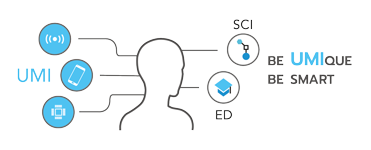
UMI-Sci-Ed (Exploiting Ubiquitous Computing, Mobile Computing and the Internet of Things to promote Science Education) UMI-Sci-Ed aims at enhancing the attractiveness of science education and careers for young people via the use of latest technologies. We putted Ubiquitous and Mobile Computing and the Internet of Things (UMI) into practice towards enhancing the level of STEM education. At the same time, we are increasing the attractiveness of pursuing a career in domains pervaded by UMI for these youths.
REVIT, 2009-2011, European Lifelong Learning Program
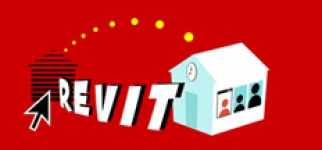
Revitalizing Small Remote Schools for Lifelong Distance e-Learning. European citizens living in remote rural or insular areas are often excluded from mainstream educational activities easily accessible by people living in larger cities. Fewer lifelong learning opportunities are available to both young pupils and adults.
The aim was the design and implementation of an ICT based distance learning framework incorporating and exploiting new trends in Distance Learning, especially e-Learning 2.0 tools and features (e.g. blogs, wikis, social networks, podcasting) brought by Web 2.0 developments in the domain of ICT, for mutual interaction, creation, share and reuse of information in order to provide useful lifelong education towards shaping the local mentality of the remote community from that of an overlooked inhabitant of a forgotten region to a European citizen, at the same time respecting linguistic and cultural diversities.
TICTC, 2006-2009, European Lifelong Learning Program, Comenius 2.1
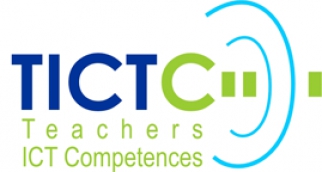
TICTC: Teachers ICT Competences. The aim of the project is to equip teachers with ICT competences to improve and develop the teaching process that leads students with hearing difficulties to raise their motivation to learn, forms learning skills that are necessary for everybody to live in the information and knowledge based society.A way to effective learning for children with hearing difficulties. It has envisaged the integration of ICT in the teaching and learning process thus making the learning process more effective.Main outputs comprise a course description, study materials for the course and advice book how to use ICT in the core subjects. The study materials are planned in the form of a CD version and printed material for the use in the form of Distance Education
LEVIS, 2006-2008, European Commission, Socrates Project
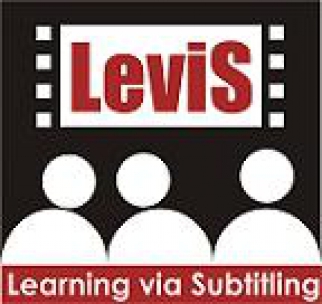
The main focus of Learning via Subtitling is the development of educational material for active foreign language learning based on film subtitling. It aims to cover the exigency for active learning where cultural elements are involved effectively through real-life (simulated) activities and the need for productive use of multimedia not as a nice add-on but as the core of an activity.
Learning via Subtitling aimed to cover the need for i) creation of active learning, task-based activities where cultural elements are involved in an authentic and motivating way and which expose the learners to highly contextualised language input, ii) productive use of multimedia as the core of an activity and not as a nice add-on, iii) creation of reusable activities requiring a relatively low level of computer literacy by tutors developing such activities and iv) soundness of the development methodology and transferability across various languages and educational systems.
In the proposed activity the student is asked, after some introductory tasks, to create subtitles or complete unfinished ones for a film scene selected according to the teacher’s specific pedagogical goals. The outcome of this activity (the subtitled clip), unlike most FL learning activities used in the classroom, is practical and concrete given that the student’s work provides an actual product which can be viewed by and shared with other students and teachers.
OBELFA, 2005-2007, European Lifelong Learning Program Grundtvig 1
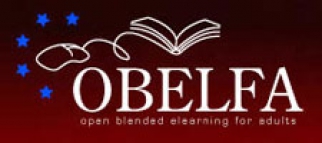
Open Blended eLearning for Adults. The main aim of OBELFA was to create blended learning courses for adults, related to specific topics for specific target groups, with a balanced rate of face to face and online lessons, and to revive interest on learning as a prerequisite for further education. Depending on the technical conditions and knowledge of the participants, there were used different eLearning methods and different devices for easy access to learning materials and support. The benefits of using Web2.0 technologies are underlined. The methodology proposed by Obelfa project tries to fill a gap between the theoretical and practical aspects of blended learning. Developing an important number of courses for different target groups, using new technologies, the OBELFA project is a real pool for research, for experimentation of blended learning techniques. The guide resulted will be useful for those developing formal or non-formal courses for adults.
TRENDS, 1996-1998, FP4-TELEMATICS 2C, European Union

TRaining Educators through Networks and Distributed Systems. The TRENDS project is aimed at enhancing the in-service training of schoolteachers in secondary education in Europe. This training is implemented through flexible distance learning methods, an in-service, school-based training system, which utilises multimedia telematics technologies. The TRENDS project has established a telematics network based on existing technologies such as high-speed data networks (ISDN), standard telephone leased lines (PSTN) and normal Internet TCP/IP protocols. The underlying network is being developed from the ground up in most cases, and in this way TRENDS is also acting as an Internet service provider which is dedicated to teachers and learners. TRENDS project aimed at the in-service, distance training of 2,400 school teachers in Secondary Education, on the “use of Information Technology and Telematics in the learning process”, from six of the participating countries (400 from each country) – Greece, Italy, Spain, Portugal, France and United Kingdom. More than 2500 teachers in 120 schools in 6 countries participated in the project.
https://cordis.europa.eu/project/id/ET1024
Greek National Projects
Ενίσχυση Σπουδών Πληροφορικής στο ΤΕΙ Λαμίας, 2006-2008, Ε.Π.Ε.Α.Ε.Κ. /ΥΠΕΠΘ.
Utilization of international standardizations for the adaptation of digital material and its reuse (Αξιοποίηση διεθνών τυποποιήσεων για την προσαρμογή ψηφιακού υλικού και επαναχρησιμοποίηση του)
Ευρεία Επιμόρφωση Εκπαιδευτικών στις ΤΠΕ, 2002-2003, ΥΠΕΠΘ, Π.Ι., ΕΑ-ΙΤΥ
Training and certification of teachers in Basic ICT Skills (Επιμόρφωση και πιστοποίηση εκπαιδευτικών σε Βασικές Δεξιότητες ΤΠΕ)
ODYSSEA/S /Odysseia, 1996-2000
Integrated ICTE utilization in 400 high schools: infrastructure, network, software, teacher training